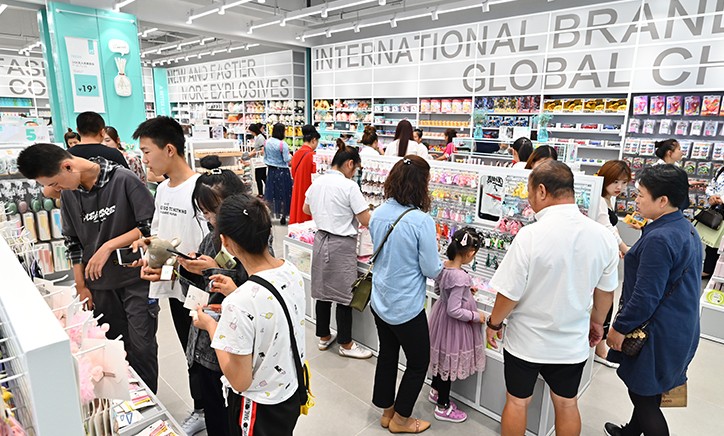The pace of society is getting faster and faster, and people's consumption habits and concepts are constantly changing. The pace of life and work is accelerating. In pursuit of speed and convenience, many people will choose to shop at fast fashion department stores. So, as both retail physical stores, what are the differences between fast fashion department stores and other ordinary department stores? Why are fast fashion department stores of the same nature more popular among the public? Let's continue to look down.

1. Differences in overall store style
The fast fashion department stores we usually see on the street give people a sense of elegance, economy, and fashion; The layout, furnishings, design, and other aspects of the store make people feel warm and comfortable. Overall, fast fashion department stores are full of the freshness of the times, which is a very thoughtful design for young people who love trendy and fashionable things. Ordinary department stores, on the other hand, appear mediocre and lack distinctive content display. The layout and decoration of the storefront appear rough, and for consumers, the experience of browsing the store instantly deteriorates.
2. Differences in product categories
Although there are many types of products in ordinary department stores, those who have visited these stores to choose from will know that the products inside are too cluttered, not well classified and targeted; Moreover, the appearance and quality of most products are truly beyond praise. Fast fashion department stores have effectively solved these problems. Just by looking at the layout of the store, it can be seen that they are well intentioned, and the appearance of the products themselves is relatively fashionable and beautiful. Moreover, through the lighting and display techniques, the products of Fast fashion department stores sell better, just like a delicious dish, beautiful and delicious to eat; Nowadays, consumers have increasingly high demands for products, which is also because in the era of advanced information technology, people have a good judgment and understanding of the quality of goods. It is difficult to deceive people with superficial things. Being able to make so many users trust and support the products of fast fashion department stores reflects that their products are very excellent.
3. Differences in shopping experience
Nowadays, many traditional department stores have poor operating conditions, mainly due to the lack of a comfortable and satisfactory shopping experience for consumers; The common phenomenon of dirty, messy, and poor quality still exists today. In this era of fierce market competition, it is difficult to attract users to come and consume without good content and experience. Only like fast fashion department stores, whether it is the decoration of the store, the cost-effectiveness reflected in the products, or the appropriate personalized services provided by the store, can give customers a sense of home, which is the advantage of the new generation of fast fashion department stores.
The above is a specific description of the difference between fast fashion department stores and traditional department stores. We need to have a clear understanding that the pace of the times is never-ending, and people's desires will become increasingly strong in the era of material prosperity. At the same time, the requirements will also become more stringent. After all, there are too many alternative products, so there is no need to focus on a specific store and a specific merchant to consume. This will test whether the business philosophy of physical stores is online.
Why can fast fashion department stores develop so well? Many smart choices have come to appreciate making fast fashion department stores to seize business opportunities and achieve success together with MIEVIC. Miwei is a powerful brand with over a thousand physical stores worldwide, covering more than 30 countries and 300 cities worldwide.




